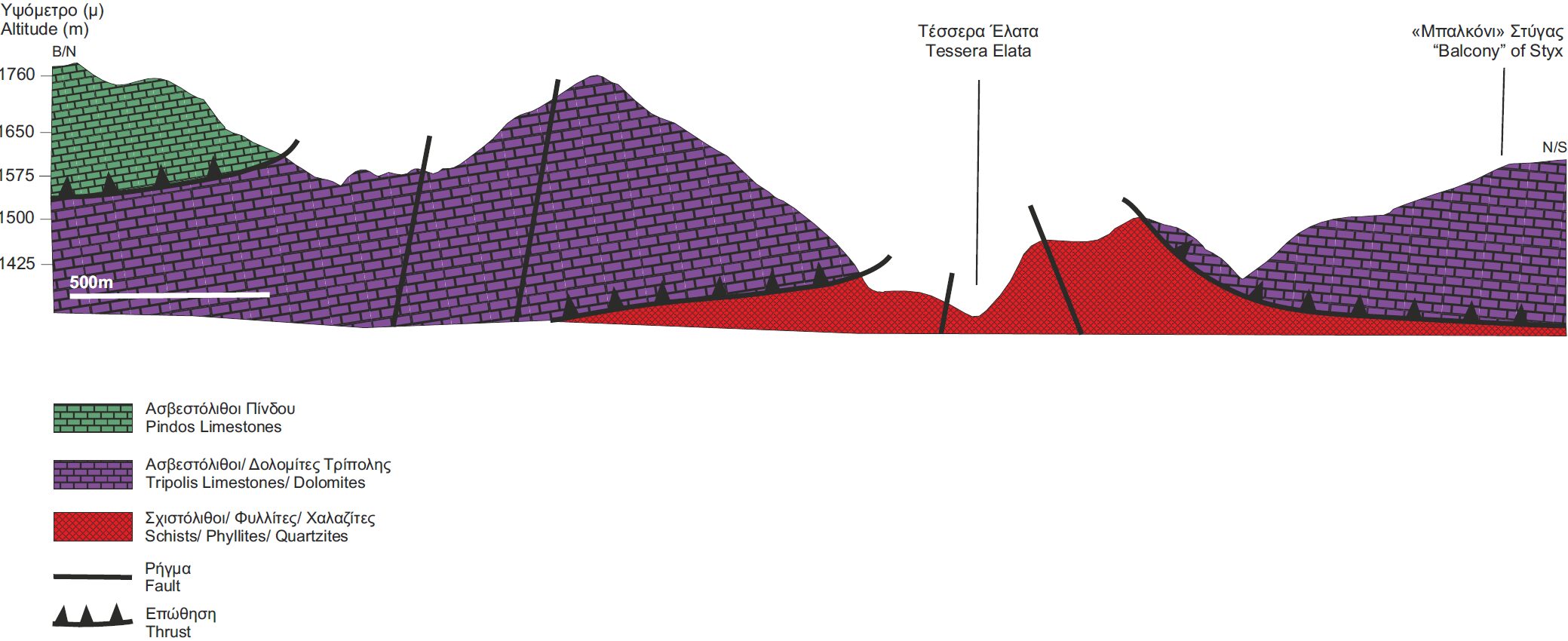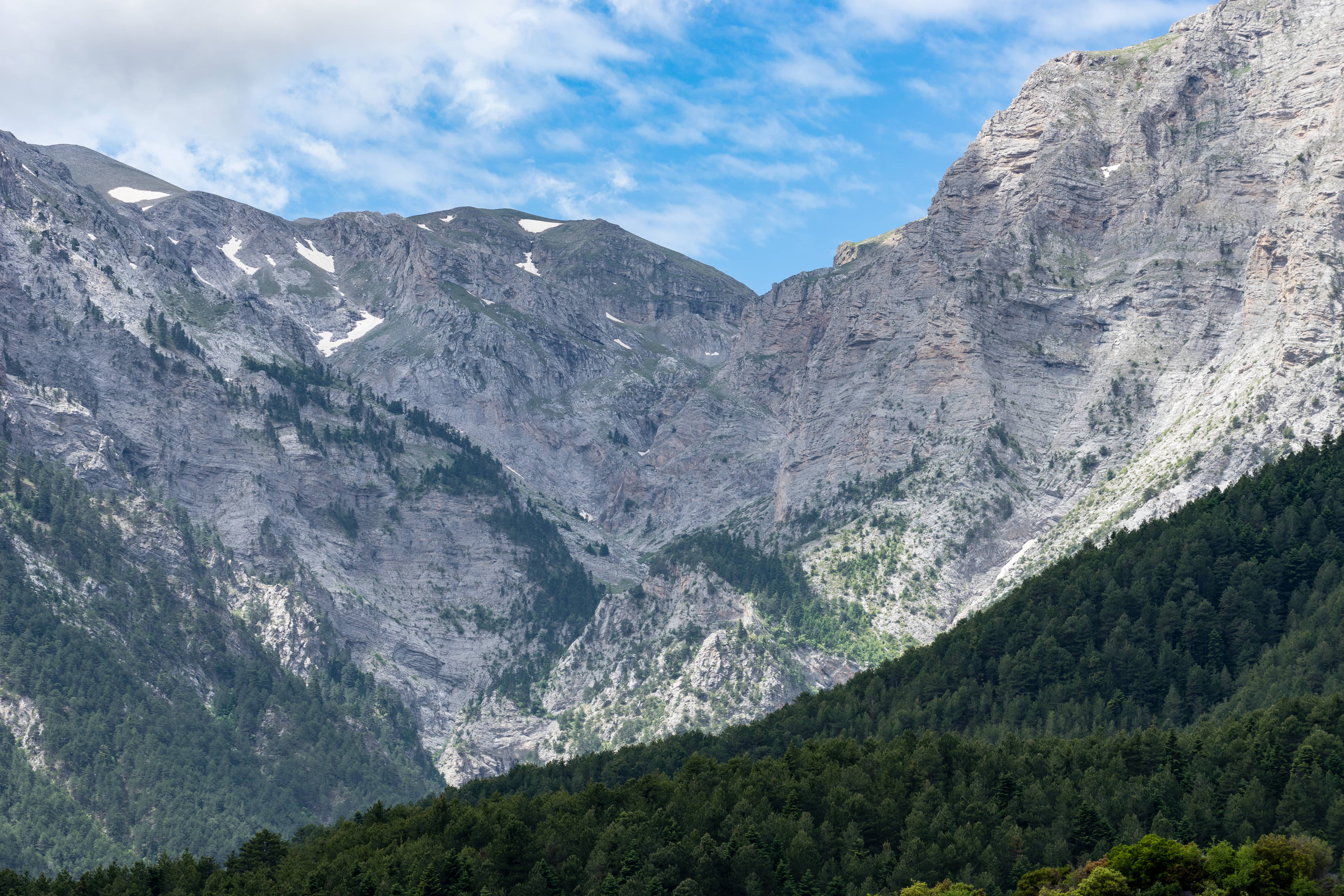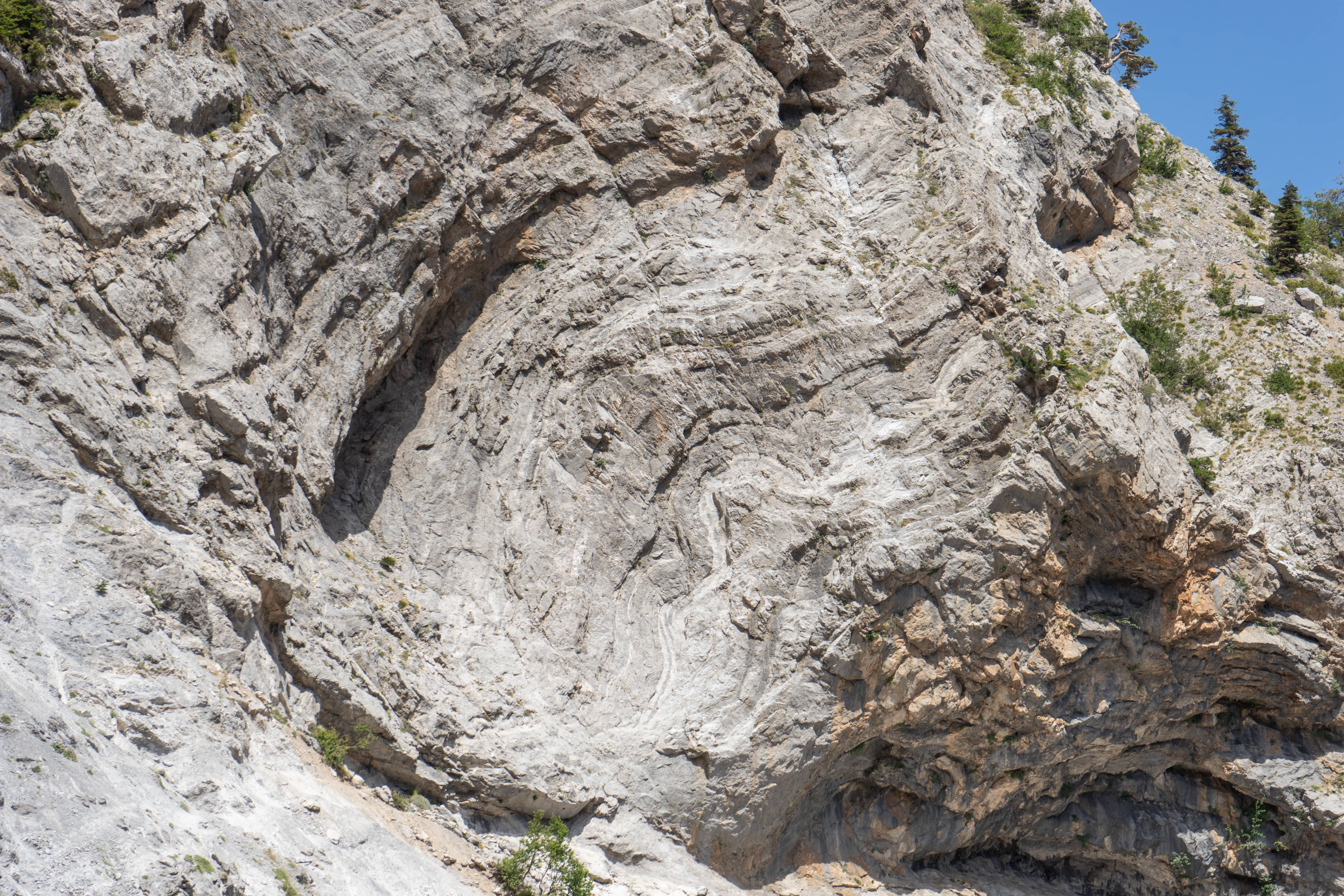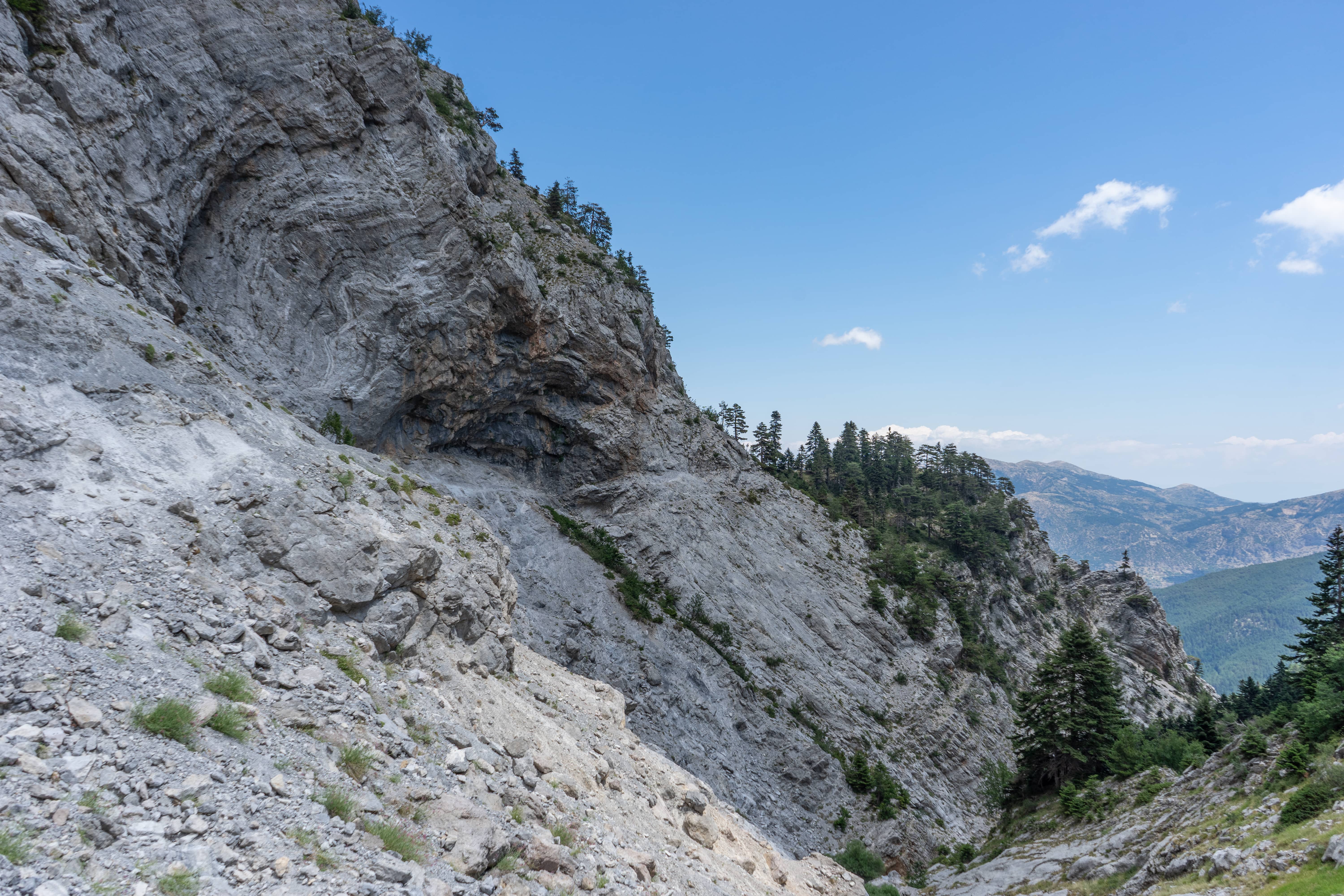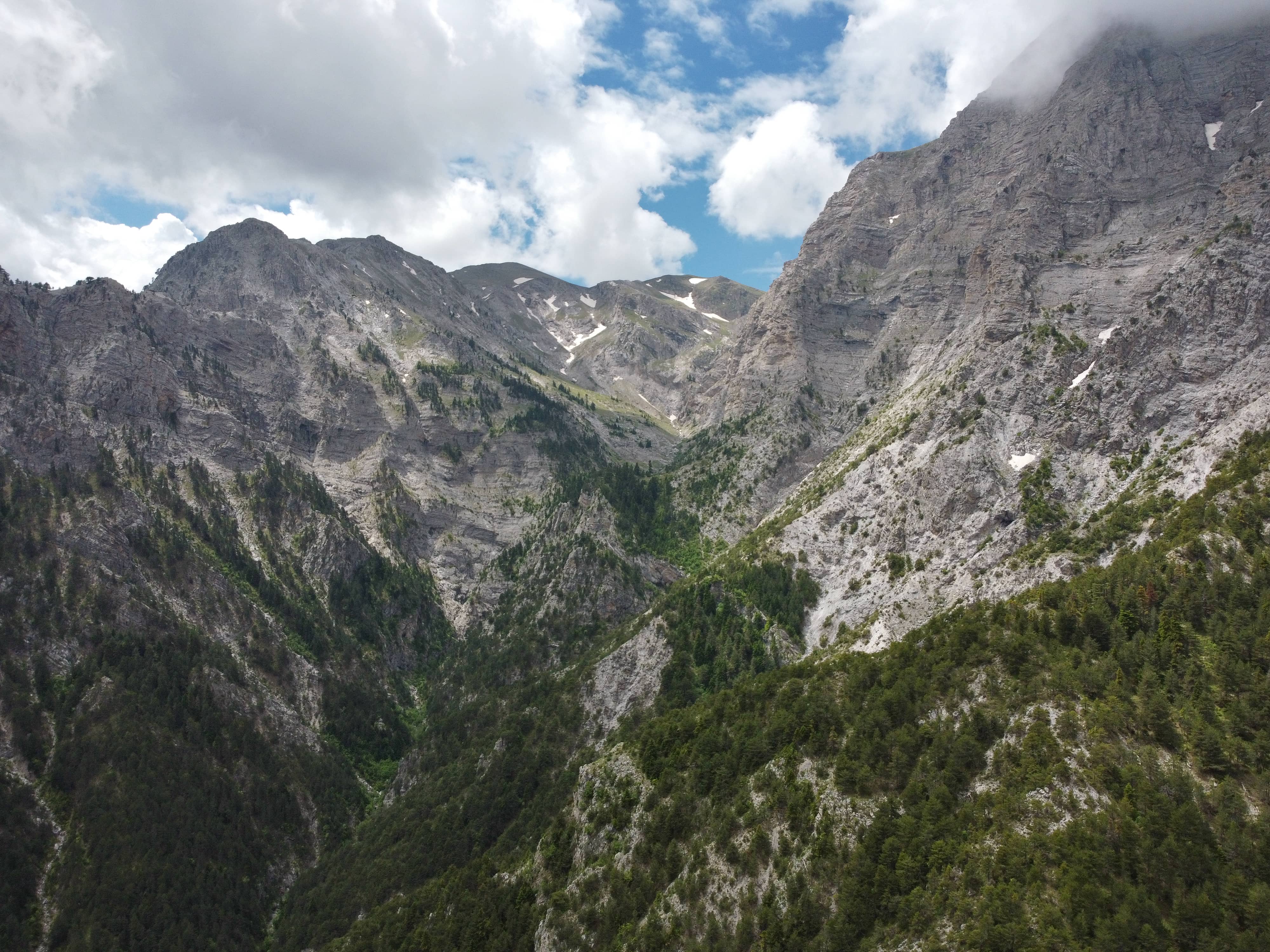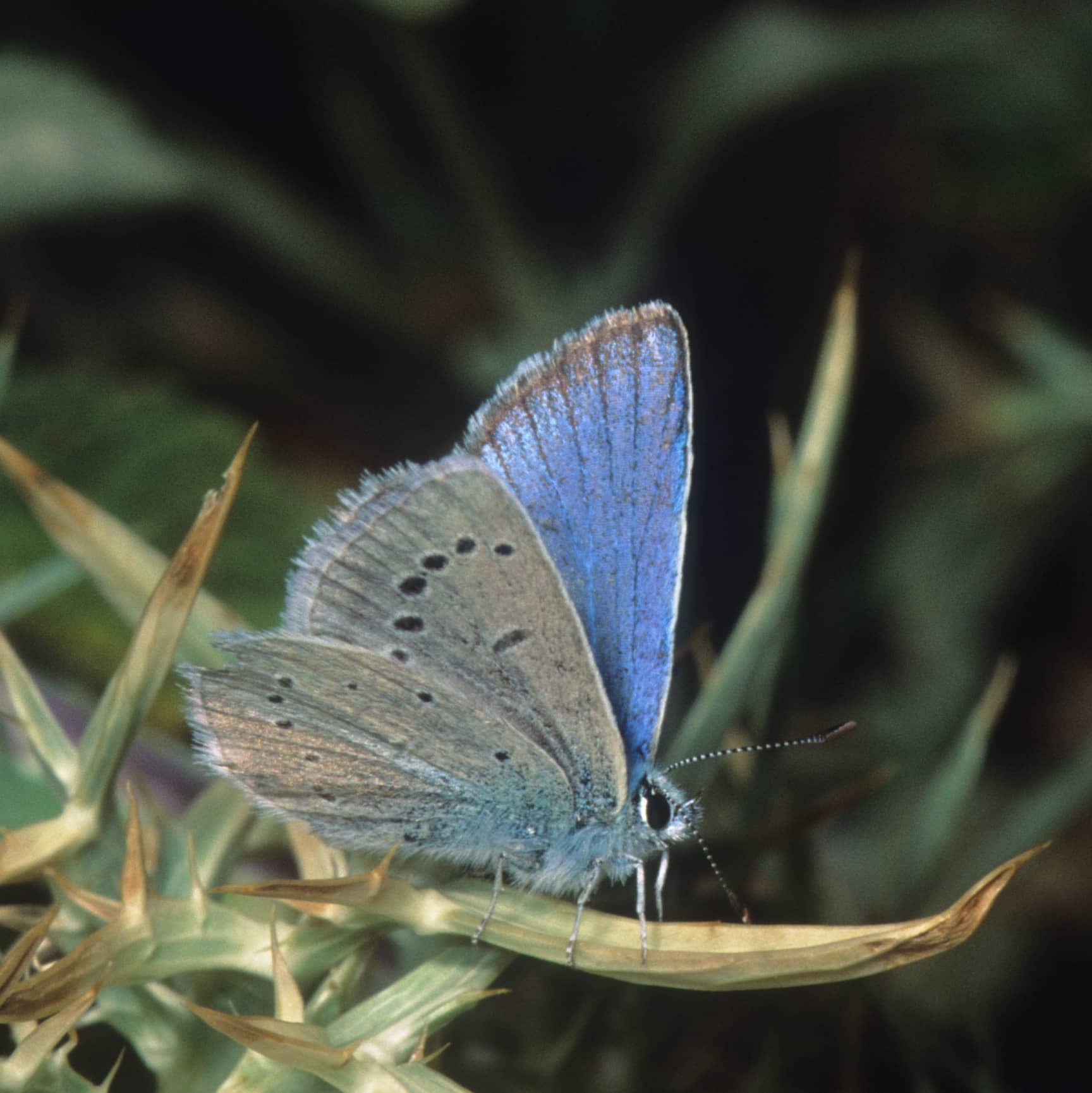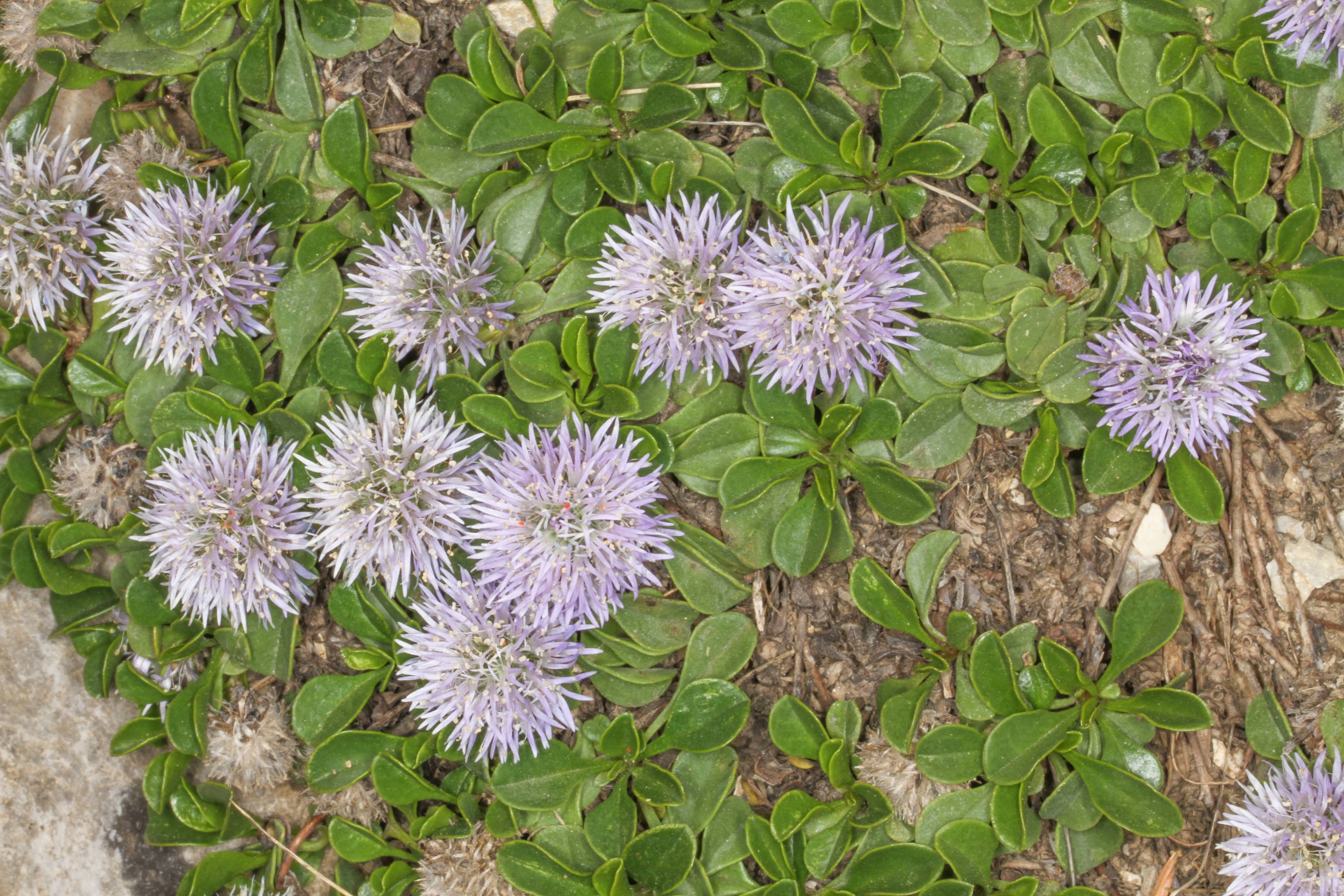OBSERVING THE MYTH!
It is a steep slope (1600m altitude). Standing at this geosite the visitor can admire the magnificent view towards the mythical Styx waterfall. Moreover, the visitor looking northeast, can admire the unobstructed view towards the historic Kastraki location. At this point Styx valley comes together with Likocharadra valley. During the Greek Revolution, 5000 local residents were fortified giving a bloody battle with the Othomans.
Geodiversity
The steep slope is made of limestones and dolomites (Tripolis Unit). They were created at the bottom of a shallow sea with reefs (about 251-145 million years ago) as fossil microorganisms witness . In some cases the depth was so low that the area was almost at zero level, as implied by the successive and very thin bedding of the rocks that can be observed if we look the rocks very closely.
As the geologic time passed by and due to the intense compression in the area these stiff rocks were deformed, broken and finally uplifted forming high mountains.
Biodiversity
The Geosite is located within the Protected Area “OROS CHELMOS KAI YDATA STYGOS” (GR2320002) of the Natura 2000 network. The area hosts 4 local endemic plant taxa of Chelmos (Alchemilla aroanica, Lonicera alpigena subsp. hellenica, Polygala subuniflora and Valeriana crinii subsp. crinii), as well as a large number of Greek endemic taxa. Remarkable is also the presence of the species Globularia stygia and Viola delphinantha. Significant invertebrates with restricted distribution are also recorded in the area such as the Lepidoptera Turanana taygetica (Critically Endangered).
The area is located within the Special Protection Area (SPA) for avifauna “OROS CHELMOS (AROANIA)-FARANGI VOURAIKOU KAI PERIOCHI KALAVRYTON” (GR2320013) and includes birds, such as the Golden Eagle (Aquila chrysaetos), and the Eurasian eagle-owl (Bubo bubo).

